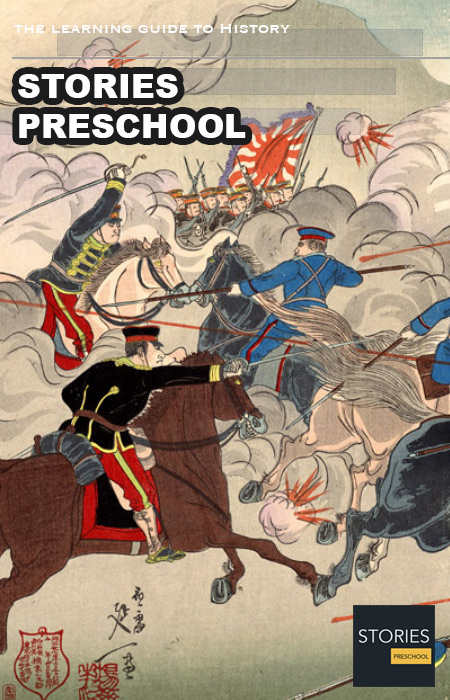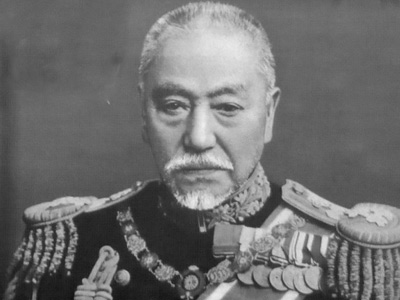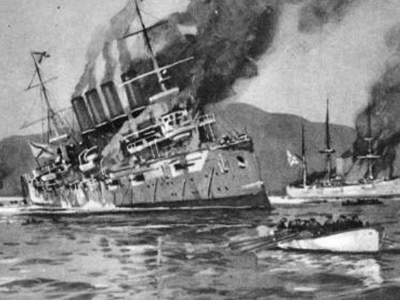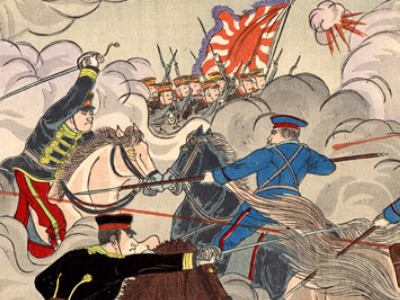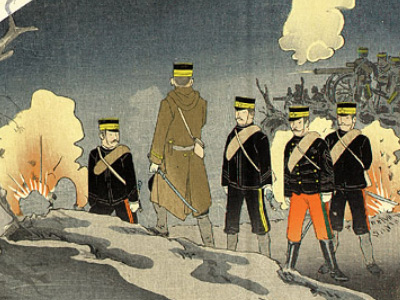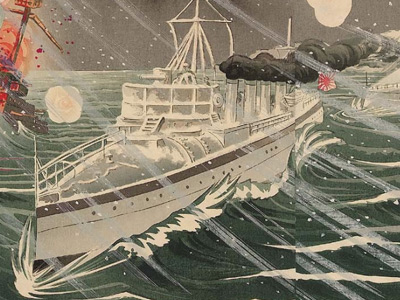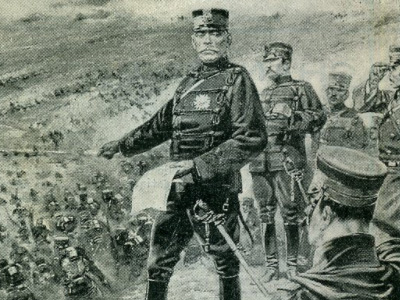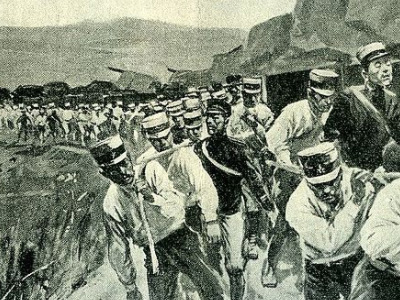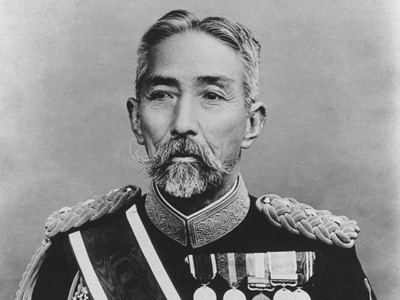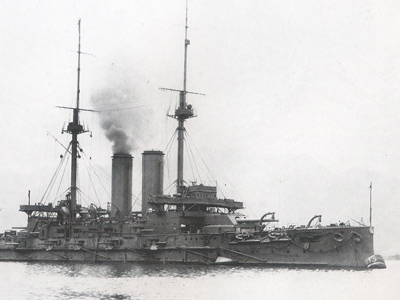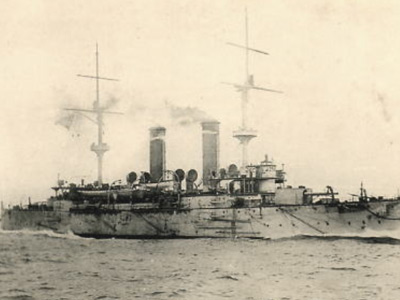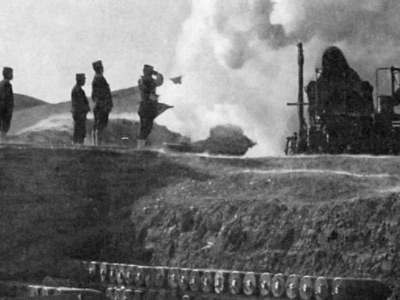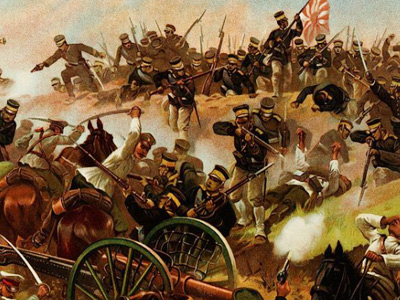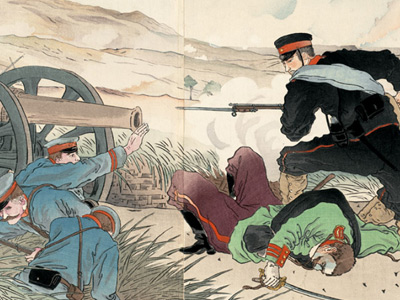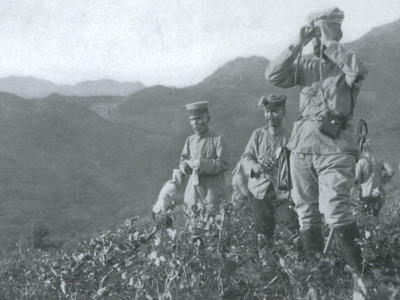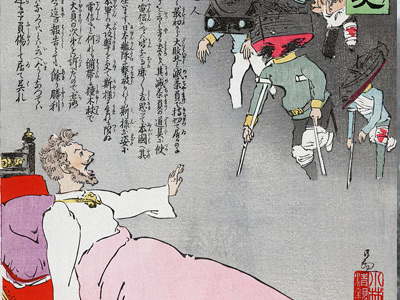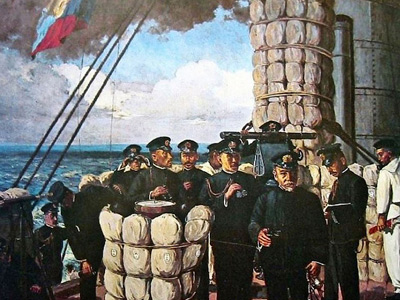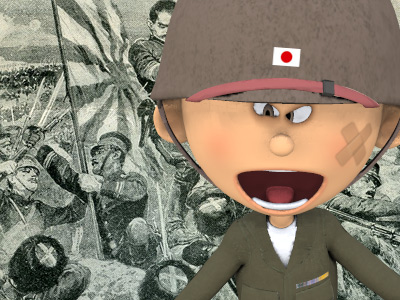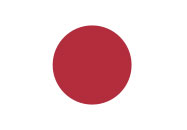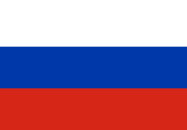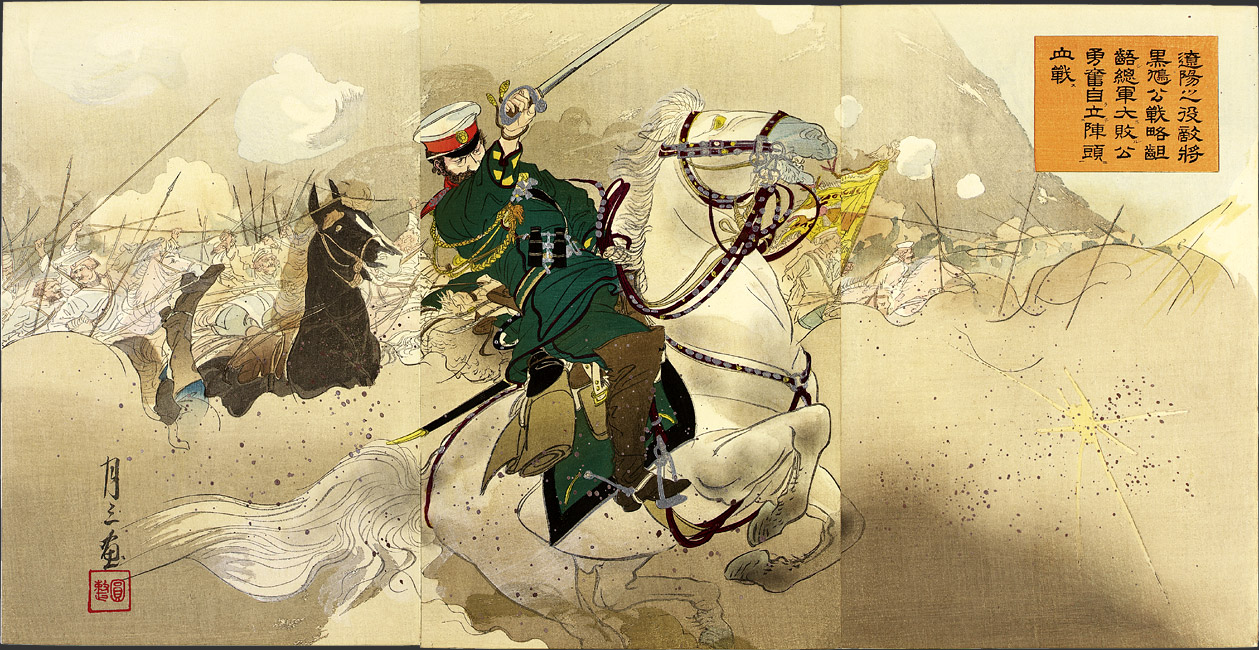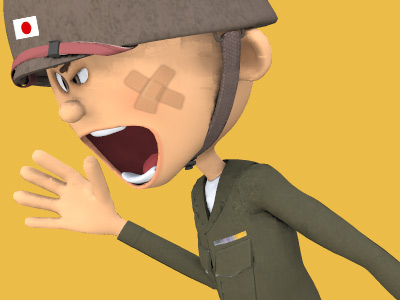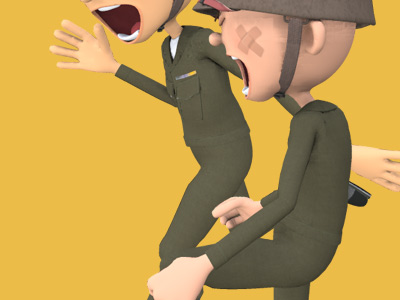Russo-Japanese War 日露戦争 (1904–1905)
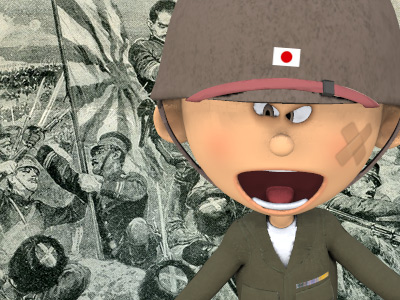
The Russo-Japanese War (8 February 1904 – 5 September 1905) was fought between the Russian Empire and the Empire of Japan over rival imperial ambitions in Manchuria and Korea. The major theatres of operations were the Liaodong Peninsula and Mukden in Southern Manchuria and the seas around Korea, Japan and the Yellow Sea.
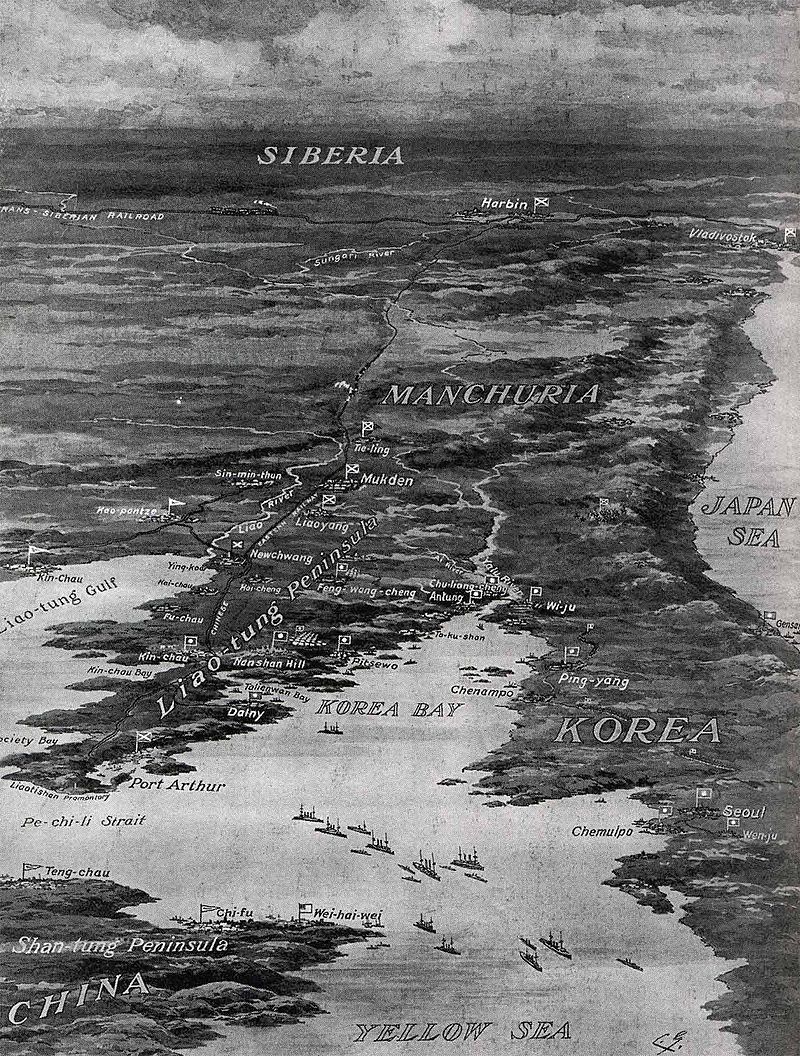
Russia Russian Empire was an empire and the final period of the Russian monarchy from 1721 to 1917, ruling across large parts of Eurasia. The rise of the Russian Empire coincided with the decline of neighbouring rival powers: the Swedish Empire, the Polish–Lithuanian Commonwealth, Qajar Iran, the Ottoman Empire, and Qing China. Russia remains the third-largest empire in history, surpassed only by the British Empire and the Mongol Empire. sought a warm-water port on the Pacific Ocean for their navy and for maritime trade. Vladivostok was operational only during the summer, whereas Port Arthur, a naval base in Liaodong Province leased to Russia by China, was operational all year. Since the end of the First Sino-Japanese War in 1895, Japan
Russian Empire was an empire and the final period of the Russian monarchy from 1721 to 1917, ruling across large parts of Eurasia. The rise of the Russian Empire coincided with the decline of neighbouring rival powers: the Swedish Empire, the Polish–Lithuanian Commonwealth, Qajar Iran, the Ottoman Empire, and Qing China. Russia remains the third-largest empire in history, surpassed only by the British Empire and the Mongol Empire. sought a warm-water port on the Pacific Ocean for their navy and for maritime trade. Vladivostok was operational only during the summer, whereas Port Arthur, a naval base in Liaodong Province leased to Russia by China, was operational all year. Since the end of the First Sino-Japanese War in 1895, Japan The Empire of Japan, also known as the Japanese Empire or Imperial Japan, was a historical nation-state and great power that existed from the Meiji Restoration in 1868 until the enactment of the post-World War II 1947 constitution and subsequent formation of modern Japan. Economic and political turmoil in the 1920s led to the rise of militarism, nationalism and totalitarianism eventually culminating in Japan's membership in the Axis alliance. feared Russian encroachment on its sphere of influence. Russia had demonstrated an expansionist policy in the Siberian Far East from the reign of Ivan the Terrible in the 16th century. Through threat of Russian expansion, Japan offered to recognize Russian dominance in Manchuria in exchange for recognition of Korea as being within the Japanese sphere of influence. Russia refused and demanded Korea north of the 39th parallel to be a neutral buffer zone between Russia and Japan. The Japanese government perceived a Russian threat to its strategic interests and chose to go to war. After negotiations broke down in 1904, the Japanese Navy opened hostilities by attacking the Russian Eastern Fleet at Port Arthur in a surprise attack.
The Empire of Japan, also known as the Japanese Empire or Imperial Japan, was a historical nation-state and great power that existed from the Meiji Restoration in 1868 until the enactment of the post-World War II 1947 constitution and subsequent formation of modern Japan. Economic and political turmoil in the 1920s led to the rise of militarism, nationalism and totalitarianism eventually culminating in Japan's membership in the Axis alliance. feared Russian encroachment on its sphere of influence. Russia had demonstrated an expansionist policy in the Siberian Far East from the reign of Ivan the Terrible in the 16th century. Through threat of Russian expansion, Japan offered to recognize Russian dominance in Manchuria in exchange for recognition of Korea as being within the Japanese sphere of influence. Russia refused and demanded Korea north of the 39th parallel to be a neutral buffer zone between Russia and Japan. The Japanese government perceived a Russian threat to its strategic interests and chose to go to war. After negotiations broke down in 1904, the Japanese Navy opened hostilities by attacking the Russian Eastern Fleet at Port Arthur in a surprise attack.
Russia suffered numerous defeats by Japan, but Tsar Nicholas II was convinced that Russia would win and chose to remain engaged in the war; at first, to await the outcomes of certain naval battles, and later to preserve the dignity of Russia by averting a "humiliating peace". The war concluded with the Treaty of Portsmouth, mediated by United States The United States of America (U.S.A. or USA), commonly known as the United States (U.S. or US) or America, is a country in North America. It is the world's third-largest country by both land and total area. The United States shares land borders with Canada to its north and with Mexico to its south. The national capital is Washington, D.C., and the most populous city and financial center is New York City. President Theodore Roosevelt. The complete victory of the Japanese military surprised world observers. The consequences transformed the balance of power in East Asia, resulting in a reassessment of Japan's recent entry onto the world stage. It was the first major military victory in the modern era of an Asian power over a European one. Scholars continue to debate the historical significance of the war.
The United States of America (U.S.A. or USA), commonly known as the United States (U.S. or US) or America, is a country in North America. It is the world's third-largest country by both land and total area. The United States shares land borders with Canada to its north and with Mexico to its south. The national capital is Washington, D.C., and the most populous city and financial center is New York City. President Theodore Roosevelt. The complete victory of the Japanese military surprised world observers. The consequences transformed the balance of power in East Asia, resulting in a reassessment of Japan's recent entry onto the world stage. It was the first major military victory in the modern era of an Asian power over a European one. Scholars continue to debate the historical significance of the war.
List of Battles
1904 Battle of Port Arthur
It began with a surprise night attack by a squadron of Japanese destroyers on the Russian fleet anchored at Port Arthur, Manchuria, and continued with an engagement of major surface combatants the following morning. View Battle of Port Arthur »
1904 Battle of Chemulpo Bay
The opening stage of the Russo-Japanese War began with a pre-emptive strike by the Imperial Japanese Navy against the Russian Pacific Fleet spread among Port Arthur, Vladivostok, and Chemulpo Bay. View Battle of Chemulpo Bay »
1904 Battle of Yalu River
and was the first major land battle during the Russo-Japanese War. It was fought near Wiju (modern village of Uiju, North Korea) on the lower reaches of the Yalu River, on the border between Korea and China. View Battle of Yalu River »
1904 Battle of Nanshan
The Battle of Nanshan was one of many vicious land battles of the Russo-Japanese War. It took place on 24–26 May 1904 across a two-mile-wide defense line across the narrowest part of the Liáodōng Peninsula, covering the approaches to Port Arthur. View Battle of Nanshan »
1904 Battle of Te-li-Ssu
It was fought on 14–15 June 1904 between the Japanese Second Army under General Oku Yasukata and the Russian First Siberian Army Corps under Lieutenant General Georgii Stackelberg. View Battle of Te-li-Ssu »
1904 Battle of Motien Pass
A minor land battle of the Russo-Japanese War, fought between the Imperial Japanese Army under General Kuroki Tamemoto and the Imperial Russian Army under General Count Fedor Keller over control of a strategic mountain pass on the main road. View Battle of Motien Pass »
1904 Battle of Tashihchiao
The town of Tashihchiao was of strategic importance in the war, as it was a railroad junction between the main line. Control of both was essential for further advances by Japanese forces towards Liaoyang and Mukden. View Battle of Tashihchiao »
1904 Battle of Hsimucheng
It was fought on 31 July 1904 near Hsimucheng, a hamlet about 20 kilometres (12 mi) southeast of the strategic junction town of Haicheng, on the main road connecting Haicheng with the coast between elements of the Imperial Japanese Army and the Imperial Russian Army. View Battle of Hsimucheng »
1904 Battle of the Yellow Sea
It was a major naval engagement of the Russo-Japanese War, fought on 10 August 1904. The battle foiled an attempt by the Russian fleet at Port Arthur to break out and form up with counterparts from Vladivostok, forcing them to return to port. View Battle of the Yellow Sea »
1904 Battle off Ulsan
Also known as the Battle of the Japanese Sea or Battle of the Korean Strait, took place on 14 August 1904 between cruiser squadrons of the Imperial Russian Navy and the Imperial Japanese Navy during the Russo-Japanese War, four days after the Battle of the Yellow Sea. View Battle off Ulsan »
1904–1905 Siege of Port Arthur
Port Arthur was widely regarded as one of the most strongly fortified positions in the world at the time. The ease of his victory during that previous conflict, and overconfidence by the Japanese General Staff in Japan's ability to overcome improved fortifications made by the Russians, led to a much longer campaign, with much heavier losses than expected. View Siege of Port Arthur »
1904 Battle of Liaoyang
The city was of great strategic importance as the major Russian military center for southern Manchuria, and a major population center on the main line on the South Manchurian Railway connecting Port Arthur with Mukden. The city was fortified by the Imperial Russian Army with three lines of fortifications. View Battle of Liaoyang »
1904 Battle of Shaho
The second large-scale land battle of the Russo-Japanese War fought along a 37-mile (60 km) front centered at the Shaho River along the Mukden–Port Arthur spur of the China Far East Railway north of Liaoyang, Manchuria. View Battle of Shaho »
1905 Battle of Sandepu
Was a major land battle of the Russo-Japanese War. It was fought within a group of villages about 36 miles (58 km) southwest of Mukden, Manchuria. View Battle of Sandepu »
1905 Battle of Mukden
The largest land battles to be fought before World War I and the last and the most decisive major land battle of the Russo-Japanese War. Involving 610,000 combat participants and 164,000 combatant casualties, it was the largest modern-era battle fought prior to World War I. View Battle of Mukden »
1905 Battle of Tsushima
Was a major naval battle fought between Russia and Japan during the Russo-Japanese War. It was naval history's only decisive sea battle fought by modern steel battleship fleets, and the first naval battle in which wireless telegraphy (radio) played a critically important role. View Battle of Tsushima »
HISTORY
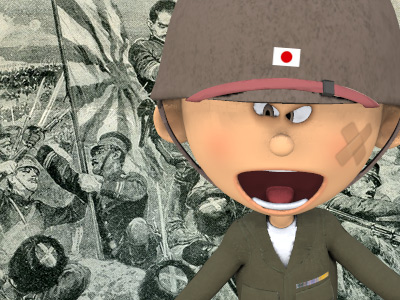
RESOURCES
This article uses material from the Wikipedia article "Russo-Japanese War", which is released under the Creative Commons Attribution-Share-Alike License 3.0.
© Stories Preschool. All Rights Reserved.
